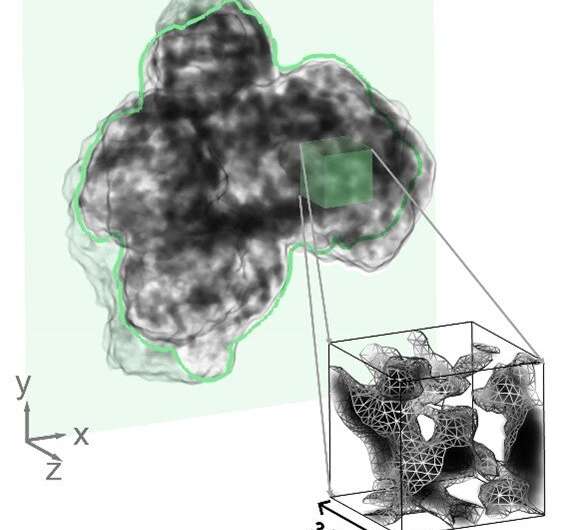The secret to DNA packing to one-millionth its size

Threads or earphone cables placed in tight spaces get easily tangled. On the contrary, our body's long and loose DNA packs into rod-shaped chromosomes one-millionth its size when the cell divides. If cell division occurs with DNA that is almost two meters in length, there is the risk of damage or loss in genetic information. Therefore, the condensation of chromosomes is essential to accurately transmitting genetic information.
A research team led by Professor Changyong Song and Dr. Daeho Sung, and Professor Jae-Hyung Jeon and Ph.D. candidate Chan Im in the Department of Physics at POSTECH, along with Professor Do Young Noh (Gwangju Institute of Science and Technology, GIST) used the X-ray from the third-generation synchrotron facility to analyze human chromosomes in their clustered state. These findings observed at the nanometer-scale resolution were published in the Proceedings of the National Academy of Sciences (PNAS).
The packing mechanism that condenses the chromosomes into one-millionth its size without any tangling and the 3D structure that enables this have puzzled researchers for over a half a century. However, it has been difficult to observe the chromosomes in their native condition. The researchers had to resort to detecting only some components of the chromosomes or infer their condensed state from looking at their uncoiled state.
This study verified the 3D structure of chromosomes by using coherent X-rays generated from the 3rd generation synchrotron facility after rapidly freezing the hydrated chromosomes and maintaining them in a cryogenic state. This is the research that uncovered the structure of the chromosomes in native states, unlike conventional techniques that thinly cut or dyed them.
Through the study, the research team confirmed that the chromosomes were formed in a fractal structure rather than the hierarchical structure stated in previous studies. In addition, a physical model showing the packing process of chromosomes was presented.
"Using coherent X-rays from the synchrotron, we have identified the 3D structure of chromosomes through high-resolution images at the nanometer-scale," explained Professor Changyong Song. "The technique developed in the study not only provides the key to understanding genetics—the essence of all living things—but also to uncover the 3D structures of other materials, such as viruses, whose detailed structure is of significant importance."
More information: Daeho Sung et al, Stochastic chromatin packing of 3D mitotic chromosomes revealed by coherent X-rays, Proceedings of the National Academy of Sciences (2021). DOI: 10.1073/pnas.2109921118
Journal information: Proceedings of the National Academy of Sciences
Provided by Pohang University of Science & Technology (POSTECH)




















